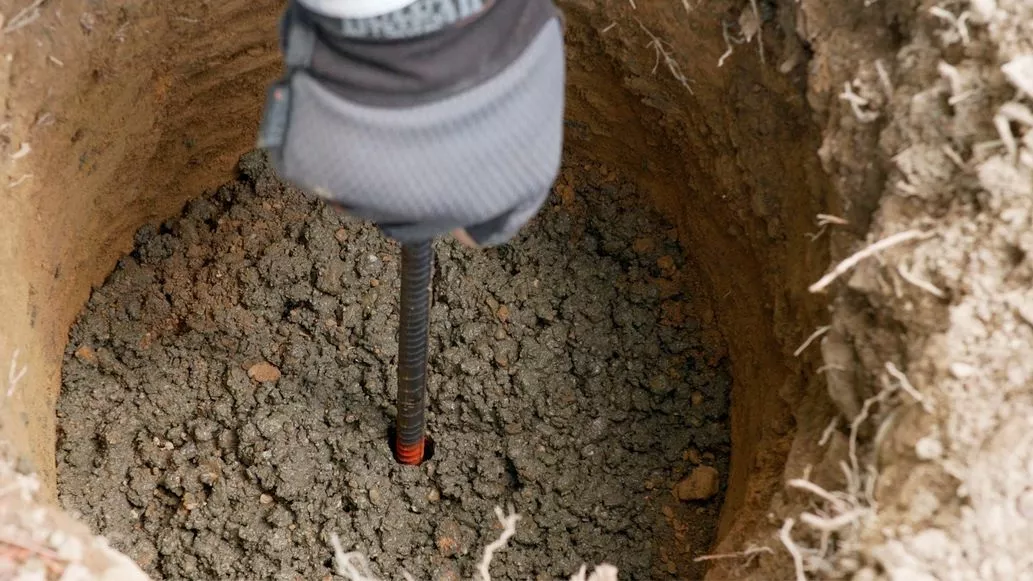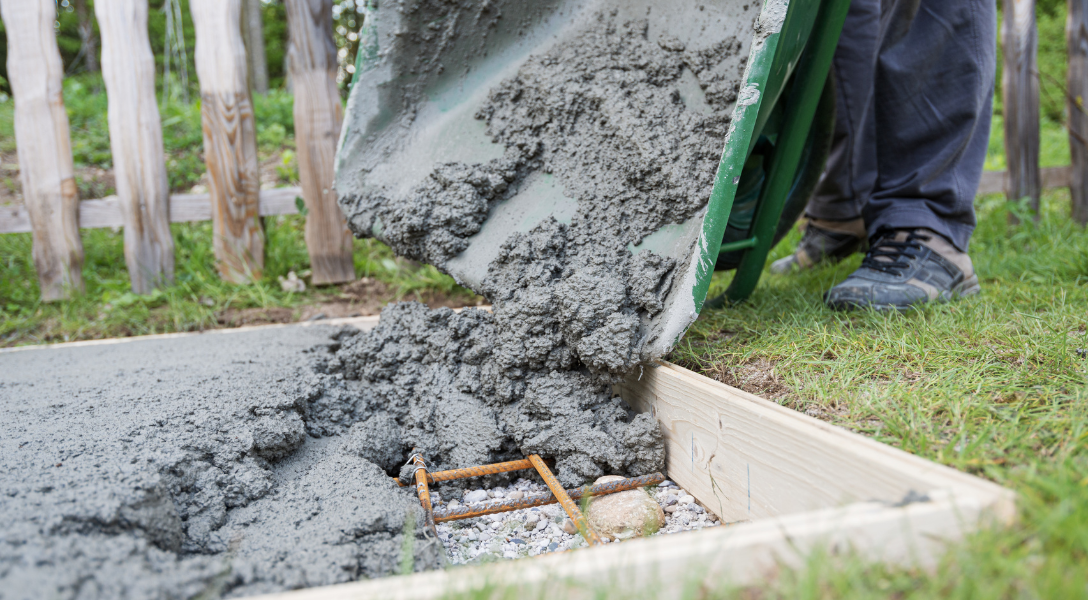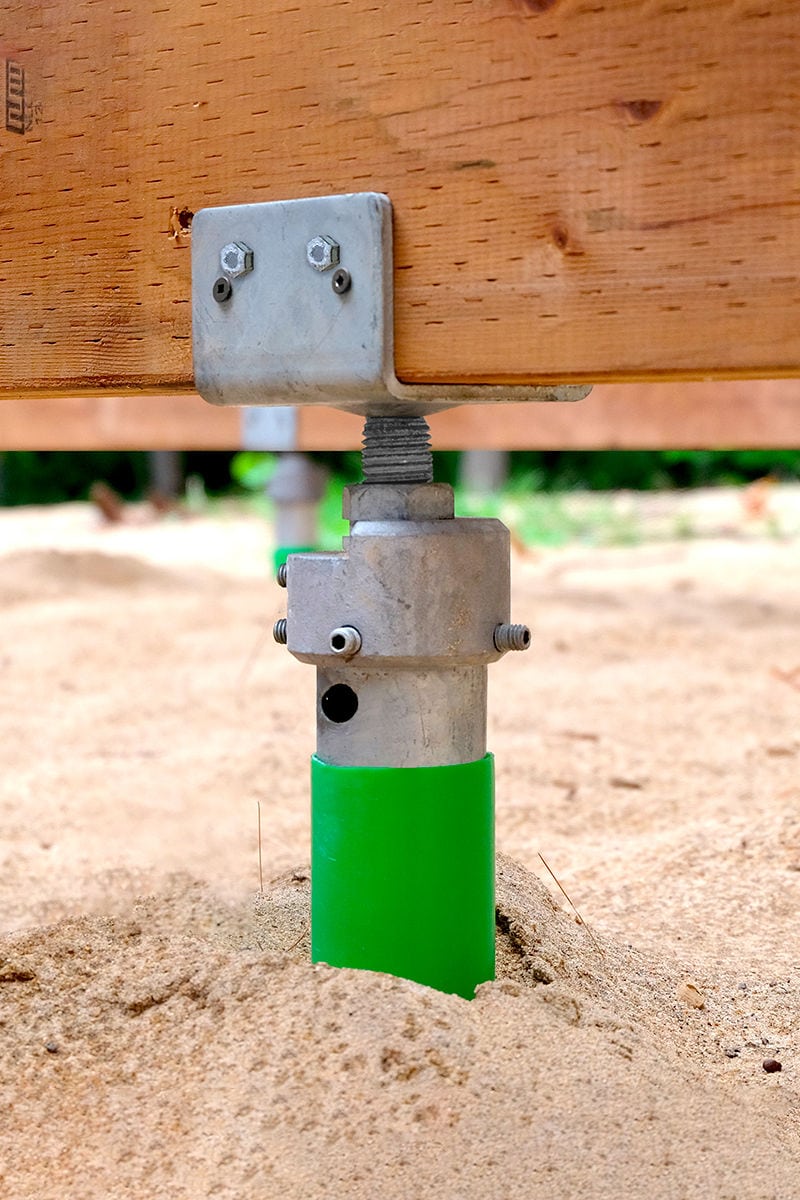Engineered for Success: The Science Behind Durable and Resilient Deck Footings
Engineered for Success: The Science Behind Durable and Resilient Deck Footings
Blog Article
Make Certain Security and Durability With Properly Set Up Deck Grounds
Deck grounds might not be the most attractive element of deck building and construction, yet they play an important function in guaranteeing security and long life. In this discussion, we will explore the value of correct deck grounds, variables to take into consideration throughout setup, different kinds of grounds offered, step-by-step installment overview, and maintenance tips for ensuring durable footings.

Value of Proper Deck Grounds
Why are correctly set up deck footings vital for the security and durability of your deck? Deck grounds are the foundation on which the deck rests, transferring the load from the deck to the ground.
Firstly, correctly mounted deck grounds distribute the weight of the deck equally, avoiding any type of unequal settling or sinking. This is particularly essential in areas with unstable dirt, as it aids to minimize the threat of the deck collapsing or shifting. In addition, well-installed grounds make sure that the deck stays level, avoiding any structural damages that can happen when a deck becomes irregular.
Second of all, appropriately installed grounds supply a solid anchor for the deck, preventing too much motion and sway. This aids to preserve the structural honesty of the deck, decreasing the threat of injuries or accidents. It additionally reduces the wear and tear on the deck, permitting it to endure the elements and routine use for a longer amount of time.
Elements to Think About for Deck Footing Setup
When installing deck grounds, there are a number of vital elements to consider for appropriate installation. These aspects can significantly influence the stability and long life of your deck. Most importantly, you require to identify the sort of soil on which the deck will certainly be built. Various soil kinds have various load-bearing capacities, so it is critical to conduct a dirt examination to make sure the footings can support the weight of the deck and its passengers. Additionally, the place and format of the deck should be very carefully intended to avoid any type of challenges such as trees, energy lines, or underground pipes. It is additionally essential to think about the neighborhood climate and climate condition, as these can influence the sturdiness of the grounds. As an example, regions with a high water table might call for extra actions to stop water damage. Finally, the dimension and product of the grounds need to be picked based upon the dimension and weight of the deck, along with the neighborhood building regulations and regulations. By taking into consideration these elements, you can make sure the appropriate setup of deck footings and delight in a secure and lasting deck.
Sorts Of Deck Grounds to Pick From
There are several various kinds of deck footings readily available for you to pick from. Each type has its very own benefits and downsides, so it's vital to consider your certain needs and the problems of your deck before choosing.
One typical kind of deck footing is the concrete footing. This involves excavating openings in the ground and putting concrete into them to create a solid structure. Concrete grounds are long lasting and supply exceptional stability, making them suitable for decks in areas with tough soil problems or high wind tons.
Another option is the helical pier ground, which is composed of a steel shaft with helical plates that are screwed right into the ground. These grounds fast to install and can be used in numerous soil types, consisting of sandy or clay soils. They are also flexible, enabling very easy progressing of the deck.
Sonotube footings are an additional preferred option. These grounds are produced by placing a cardboard tube in an opening and loading it with concrete. Sonotube footings are reasonably easy to install and provide ample security for smaller decks or in locations with less requiring soil problems.

When selecting the type of deck footing, it's critical to take into consideration factors such as dirt problems, deck dimension and weight, local building regulations, and personal preferences. By selecting the appropriate ground kind, you can make certain the security and long life of your deck.
Step-by-Step Overview for Putting Up Deck Footings

Determine the place: Start by noting the precise placement of each footing making use of risks and string (Deck Footings). Think about any kind of local building regulations or laws regarding obstacle ranges
Dig the holes: Utilize a blog post opening digger or an auger to dig the openings for the grounds. The depth will depend upon the frost line in your location and the kind of soil. Typically, a deepness of a minimum of 36 inches is recommended for stability.
Degree the openings: Make certain that the bottoms of the holes are level (Deck Footings). This can be accomplished by making use of a level or a straight board across the top of the holes
Include gravel: Location a layer of crushed rock at the end of each opening to boost water drainage and protect against the ground from sinking into the soil in time.
Place the footing types: Place the footing develops into the holes, ensuring they are centered and level. Use stakes to secure them in place.
Mix and put concrete: Follow the instructions on the concrete mix bag to prepare the concrete. Pour the concrete into the ground kinds, loading them entirely.
Smooth the surface area: Utilize a trowel to smooth the surface of the concrete and remove any air pockets. Allow the concrete to cure according to the manufacturer's instructions.
Upkeep Tips for Lasting Deck Grounds
Proper upkeep is important for ensuring the long life and stability of deck grounds. By routinely evaluating and preserving your deck grounds, you can stop damage and prospective news safety dangers.
Regular cleaning is additionally important for keeping deck footings. Plants, particles, and dirt can gather around the footings, which can result in moisture accumulation and degeneration. Cleansing the footings regularly, making use of a brush or a pressure washing right here machine, can help avoid these concerns and expand the life-span of your deck.
In addition to cleaning, it is very important to maintain the location around the footings clear of any type of obstructions. Prevent piling items against the footings or enabling plants to expand also near them. These blockages can catch moisture and cause the footings to weaken gradually.
Last but not least, normal resealing of the grounds is advised to safeguard them from wetness and other environmental aspects. Using a water-proof sealer can aid prevent water damage and expand the life-span of the grounds.
Verdict
Finally, correct installation of deck footings is crucial for guaranteeing stability and longevity of your deck. Factors such as dirt kind, tons capability, and regional building codes need to be considered when picking the appropriate kind of deck grounds. Adhering to a step-by-step overview for installment and normal maintenance will aid to make certain the grounds stay resilient and lasting.
In this conversation, we will certainly discover the importance of appropriate deck footings, factors to consider throughout setup, different kinds of footings readily available, step-by-step installation overview, and maintenance tips for making certain resilient footings. Deck grounds are the foundation on which the deck relaxes, transferring the load from the deck to the ground.One usual type of deck ground is the concrete footing. Put the ground forms: Put the footing creates into the openings, ensuring they are focused and level.In verdict, appropriate installation of additional resources deck grounds is important for ensuring security and longevity of your deck.
Report this page